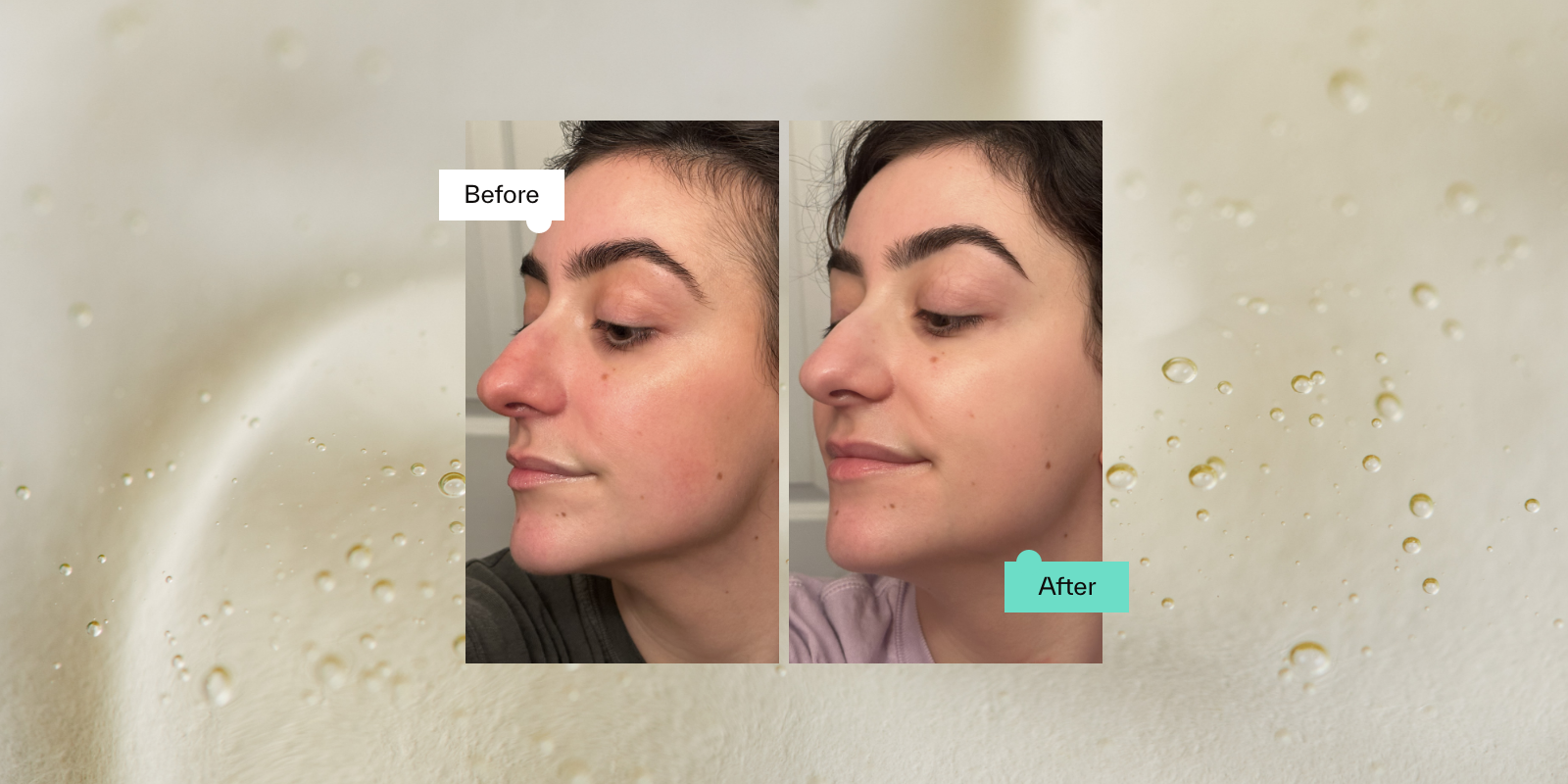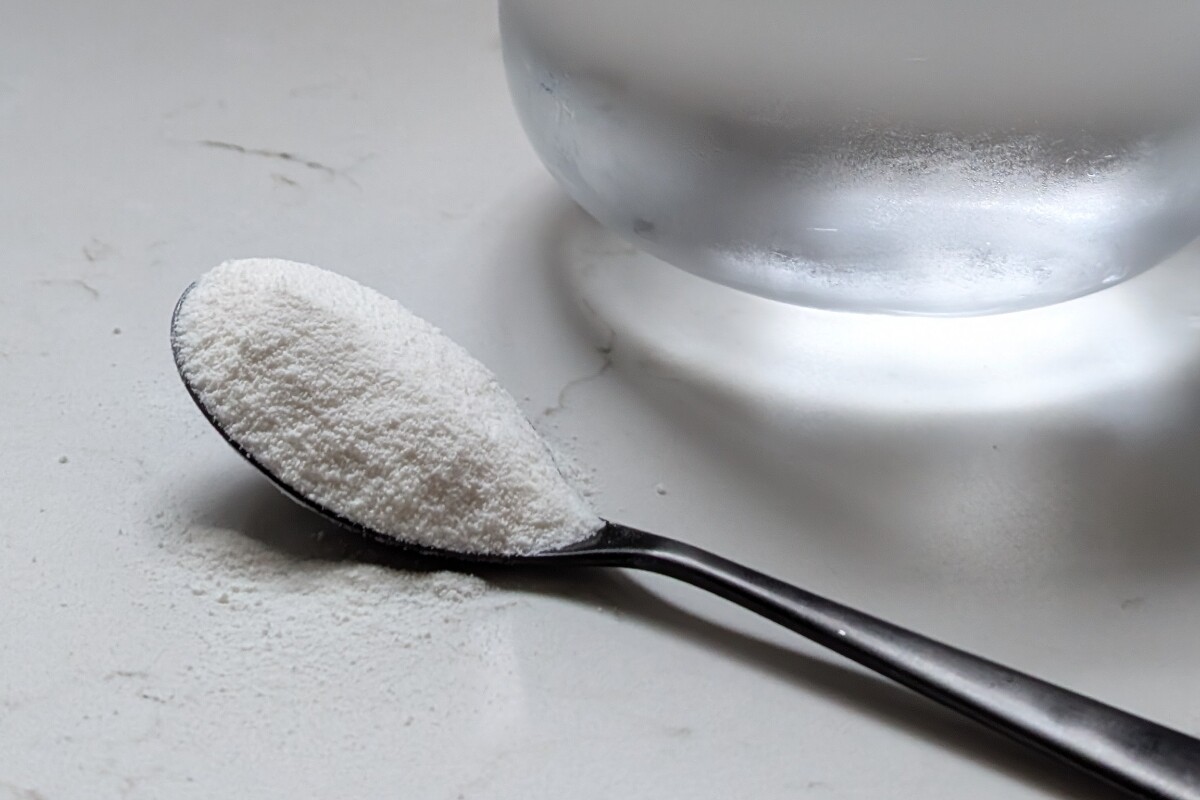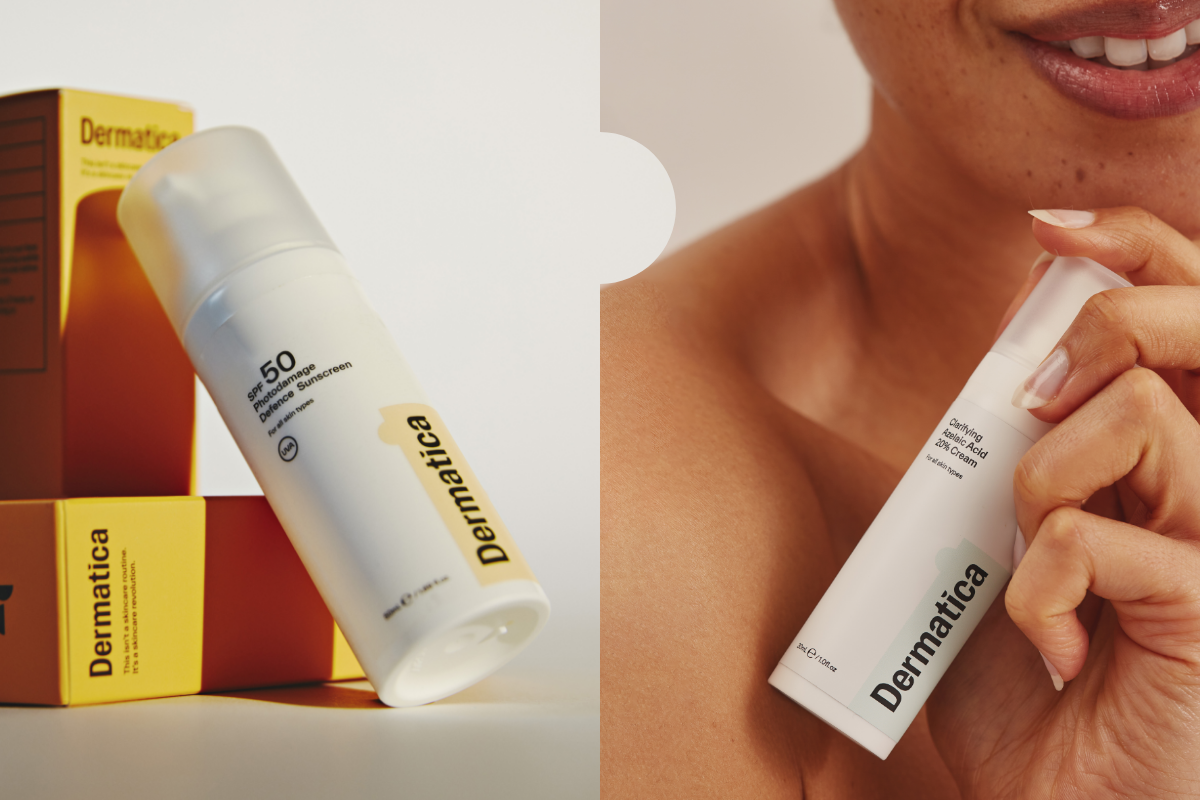There are very good reasons why hyaluronic acid has become incredibly popular over the last ten years. You’ve probably seen it advertised front-and-centre as a hero ingredient on countless over-the-counter products.
For anyone who’s curious why it’s on so many ingredient lists, and where it should fit into your routines, we’ll take you through what it is (and what a humectant is more generally), why it’s different from other skincare acids you may already know about, and how to add it to your skincare routine.
What is Hyaluronic Acid?
Hyaluronic acid (HA) is a humectant that already naturally occurs in our skin, and its main benefit is its ability to retain moisture. It can hold about a thousand times its weight in water.
When added to your morning and evening skincare rotation, hyaluronic acid is brilliant for all skin types and all ages. It helps your skin maintain healthy hydration levels, leaving it looking younger, plumper, and healthier overall.
Understanding the Basics
The primary function of hyaluronic acid is to hydrate, and help your skin barrier stay at healthy moisture levels throughout the day. Humectants more generally are water-absorbing substances that keep things moist. Hyaluronic acid therefore draws moisture from the environment, while simultaneously supporting our cells’ ability to hold onto it. This is crucial for maintaining balance in the skin’s moisture barrier, which helps protect against dryness, irritation, and signs of ageing. (1)
Hyaluronic acid isn’t the same as exfoliating acids like glycolic, lactic and salicylic. Hyaluronic acid doesn’t have any exfoliating properties. It’s suitable for all skin types, at any time of the day. Morning and/or evening.
In fact, hyaluronic acid is such a well tolerated and gentle ingredient, it’s present in almost every skincare product you can think of from cleansers and serums to hand soaps and foot creams. (2)
Before Using Hyaluronic Acid: Common Skin Concerns
HA suits almost all skin types, including dry, oily, sensitive and combination skin. These are some common skin concerns that hyaluronic acid can help with.
Assessing Your Skin Type
– Dryness and Dehydration: Your skin may feel tight, rough, or flakier than when it’s at its best. Dry skin can also make fine lines and wrinkles more pronounced.
– Dullness: Lack of moisture often makes your skin look more tired and less radiant than usual.
– Loss of Elasticity: Dehydrated skin can appear less bouncy and full.
– Sensitive Skin: Without keeping skin hydrated, your skin’s barrier can become compromised, leading to more sensitivity, redness and/or irritation.
Hyaluronic Acid Benefits
When applied topically (on the skin), hyaluronic acid penetrates through multiple layers of the epidermis, providing a dose of intense moisture and creating an overall plumping effect. Especially when using products with multiple molecular weights of hyaluronic acid, like the Hydrating Hyaluronic Acid + Vit B5 Serum.
This leads to several visible changes:
– More Hydration: Skin hydration is one of the major concerns for skin health. Drawing moisture into the skin helps relieve roughness or flaky patches, to keep all skin types – including oily skin – feeling soft and supple.
– Smoothing: An extra boost of moisture helps to smooth fine lines, reduce enlarged pore size and soften the appearance of wrinkles. This gives your skin texture a smoother, more youthful appearance.
– Healthier Skin Barrier: Keeping your skin at the right moisture levels strengthens the skin barrier, protecting it from environmental aggressors and reducing sensitivity.
– Radiance and Glow: Well-hydrated skin often looks healthier and younger.
What to Expect After Applying HA
– Immediate Hydration Boost: Many people notice an instant improvement in their skin’s hydration levels after the first use. Skin feels softer and more supple almost immediately.
– Brighter Complexion: Moisturised skin can appear brighter and more luminous. Your skin will look fresher and more awake.
– Increased Firmness: Over time, it can help improve skin elasticity, making your skin look firmer and more youthful.
– Balanced and Calm: Preventing water loss from the skin will help strengthen the skin barrier, making it feel comfortable and resilient. (3)
Your New Skincare Routine
For optimal results, follow these steps:
– Cleanse: Start with a gentle cleanser to remove any makeup and impurities.
– Apply Serum: Apply a hyaluronic acid serum like Hydrating Hyaluronic Acid + Vit B5 Serum to clean, damp skin to maximise absorption. Gently pat it in, allowing it to penetrate for a few seconds.
– Moisturise: Follow with a nourishing moisturiser like Nourishing Ceramide + Peptide Moisturiser that suits your individual skin type to seal in the hydrating serum.
– Protect: During the day, apply a Vitamin C serum like Vitamin C 15%: Fresh Batch Ascorbic Acid and a broad-spectrum sunscreen like SPF50 Photodamage Defence Sunscreen to protect your skin from UV damage.
Choosing the Right HA Serum
Here are some things to consider.
– Molecular Weight: Hyaluronic acid molecules come in different sizes, which affects how deeply they penetrate the skin. Choose a product that contains a mix of low, medium, and high molecular weights to ensure deeper layers of your skin receive the benefits, too.
– Formulation: Consider your individual skin type when choosing the right skincare formulation. Serums are lightweight and less likely to cause clogged pores, making them suitable for all skin types including breakout-prone skin. Richer creams provide more moisture to keep dry skin hydrated.
– Complementary Moisturisers: Glycerin, panthenol, ceramides, peptides, and antioxidants like Vitamin E can also improve your skin’s moisture content for healthy, glowing skin.
– Additional Ingredients: Combine it with brightening ingredients like niacinamide (Vitamin B3), glycolic acid and Vitamin C to improve dark spots and uneven skin tone. (2)
Conclusion
This accessible, well-tolerated ingredient has a unique ability to retain moisture, helping to keep almost every skin type hydrated, plumped and radiant.
With so much skincare on the market, consider personalised advice from dermatology experts to help you reach your goals.
Find out what formulas are suitable for your skin by visiting our website.
Hyaluronic Acid Before And After Image
Dermatica Customer: Shannon Forsyth
Treatment ingredients: Hyaluronic Acid
Treatment length: 45 days
References
1. Giorgia Natalia Iaconisi, Lunetti P, Gallo N, Anna Rita Cappello, Fiermonte G, Dolce V, et al. Hyaluronic Acid: A Powerful Biomolecule with Wide-Ranging Applications—A Comprehensive Review. 2023 Jun 18;24(12):10296–6.
2. Juncan AM, Moisă DG, Santini A, Morgovan C, Rus LL, Vonica-Țincu AL, et al. Advantages of Hyaluronic Acid and Its Combination with Other Bioactive Ingredients in Cosmeceuticals. Molecules. 2021 Jul 22;26(15):4429.
3. Draelos ZD, Diaz I, Namkoong J, Wu J, Boyd T. Efficacy Evaluation of a Topical Hyaluronic Acid Serum in Facial Photoaging. Dermatology and Therapy. 2021 Jun 26;11(4):1385–94.
Ash Sharma
Dr Ashwin Sharma is a medical doctor and writer with a particular interest in health technology, artificial intelligence and medical weight loss. He completed his training at the University of Leicester and Imperial College London, and has since been exploring the intersections of medicine, technology, and communication.
Related Posts
October 1, 2024
0 Comments12 Minutes





